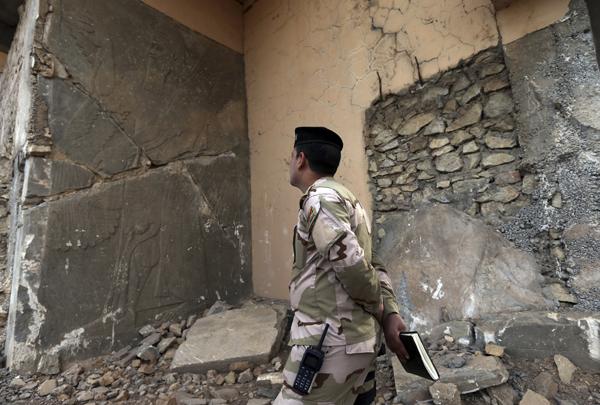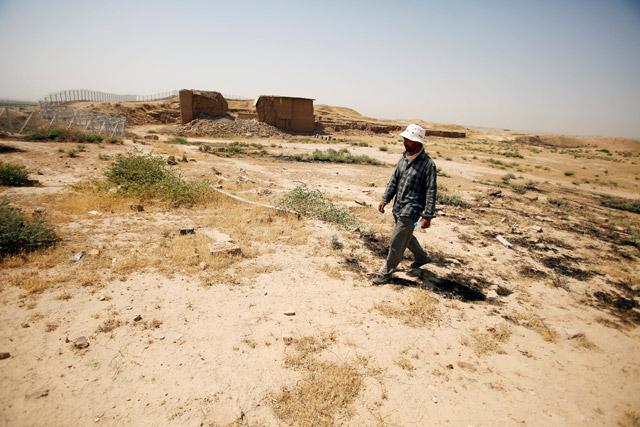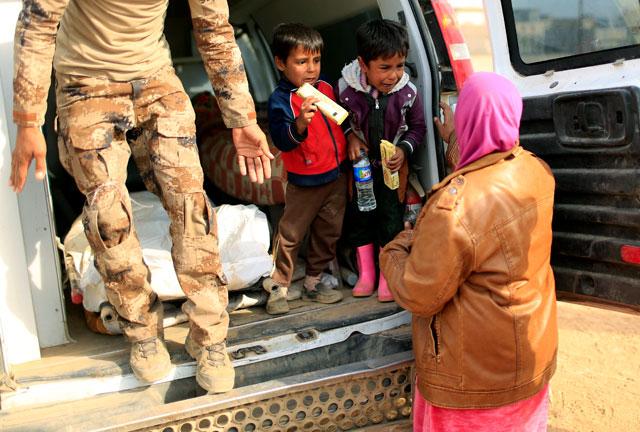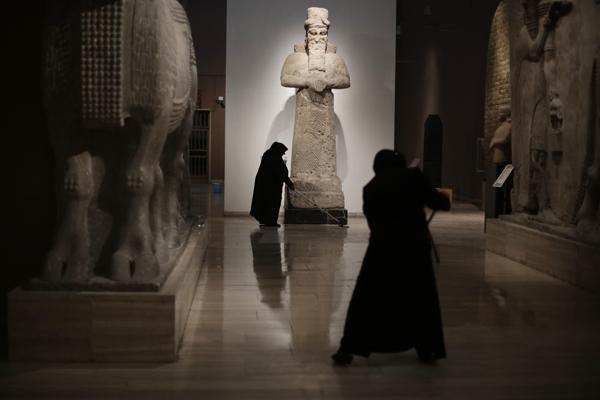You are here
Nimrud’s broken glory lies in dust after Daesh rampage
By Reuters - Nov 16,2016 - Last updated at Nov 16,2016

An Iraqi army officer looks at a damaged carved stone slab, which was destroyed by the Daesh terror group militants, at the entrance of the ancient site of Nimrud, some 30km southeast of Mosul, Iraq, on Wednesday (AP photo)
NIMRUD, Iraq — In a field outside an ancient palace in the Assyrian city of Nimrud, shattered remains of intricate carvings lie broken in the dust.
Remnants of elaborate wall panels and colossal statues of winged bulls, they stood at the site for nearly three millennia, reminders of a mighty empire which stretched across the Middle East.
At the northern edge of the old city, a ziggurat — or terraced pyramid — towered over the palace and nearby temples.
The ziggurat has been reduced to a pile of dirt, with tyre tracks all over it, apparently flattened by bulldozers in the last two months before the Daesh terror group militants were driven out of the site by Iraqi forces on Sunday.
Palace walls have been stripped of the carved facades which adorned them. Just a few pieces remain in place, while fragments of the winged bulls — or lamassus — which stood at one of the palace entrances lie in a field outside.
Carefully engraved feathers can still be seen on one of them, lying close to what appears to be a foot of one of the mythical carved creatures.
"There were about 200 ancient panels. Daesh stole some of them and destroyed the rest," Major-General Dhiya Kadhim Al Saidi told reporters on a visit to the site on Wednesday, three days after it was recaptured.
A tribal fighter from the area said the ziggurat had been destroyed by the militants in the last two months as the Iraqi army advanced towards Nimrud, confirming evidence from satellite pictures which showed its steady destruction since September.
Saidi said Daesh had been driven about 3.5 km away from Nimrud, but the area had not yet been cleared of possible bombs and booby traps.
Nimrud lies on the eastern bank of the Tigris River, 30 km south of Mosul where Iraqi soldiers are battling to crush Daesh. Mosul is the largest city under the militants' control in Iraq and neighbouring Syria.
Iraq's antiquities authority says it is still working to set up field teams to assess the damage to the site, but says it hopes some of the ruins can be salvaged.
"Despite the massive destruction to the ancient city, and the loss of the architectural intricacies of the palaces and temples and the ziggurat, we trust that we can restore and renovate what was destroyed and bring back to life this outstanding archaeological site," Deputy Culture Minister Qais Hussain Rasheed said.
Related Articles
NIMRUD, Iraq — Agatha Christie lived here once, but only memories remain of the time the best-selling crime writer spent among the ruins of
MOSUL, Iraq — Iraqi forces said on Sunday they had recaptured the site of an ancient Assyrian city blown up by the Daesh terror group, as th
BAGHDAD — The Assyrian city of Nimrud, located in an area Iraqi forces said was recaptured during the operation to retake extremist-held Mos


















